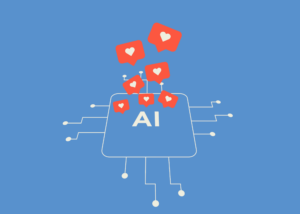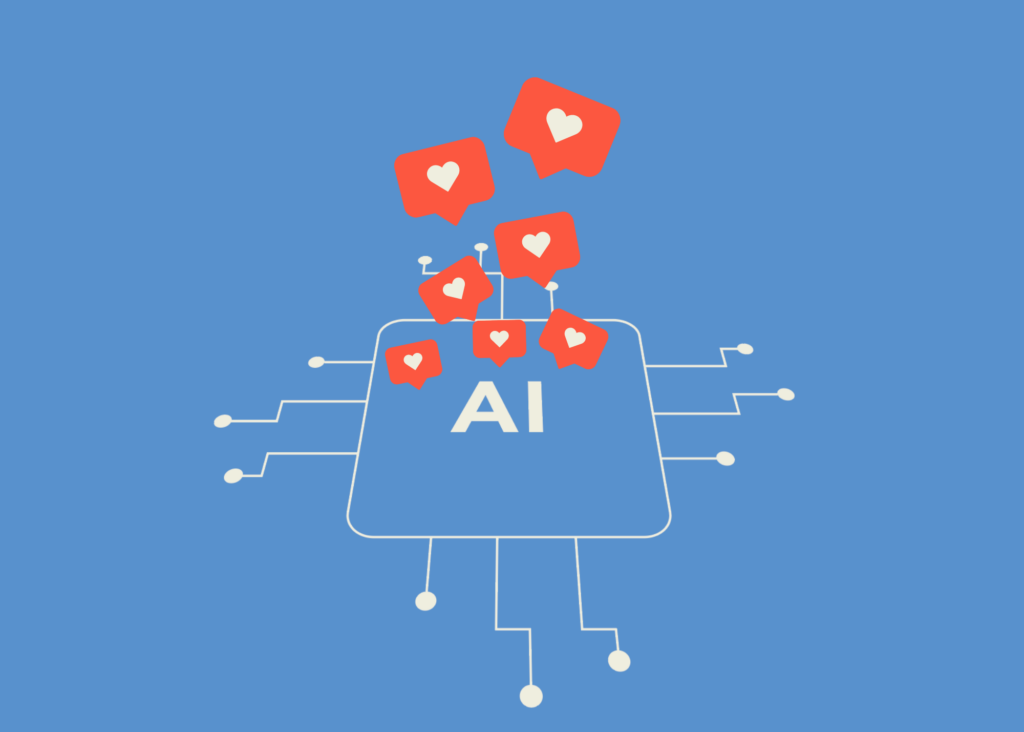Using AI to Amplify Paid Social Execution

AI continues to be one of the hottest trends in digital marketing, and paid social platforms are no exception. But just like other channels and tactics, there are various ways to lean into more automation ranging from cautious to going all in. There’s no doubt the top players like Meta, LinkedIn, and TikTok want advertisers to throw caution to the wind and adopt their AI features as they roll out; however, there are smart ways for each brand to test the new technologies based on their risk tolerance. For example, for brands with stricter policies, a conservative testing approach might be the strongest adoption plan rather than enabling multiple features at once.
No matter the approach taken, one thing is certain: brands that ignore all AI features leave the door open for their competition to gain share. To help marketers navigate the multitude of AI advancements within paid social, we’ve outlined that AI tools from the largest paid social platforms boil down to two main capabilities:
- Targeting expansion tools that give the algorithms more control in finding the right people.
- Creative tools that enhance current assets and help make the creation of new assets easier.
1. Targeting expansion
The concept of broadening targeting efforts and leaning on algorithms to find the right customers isn’t completely new. With the significant data losses that platforms like Meta have dealt with the past couple years from iOS updates and impending cookie deprecation, there is an inherent need to lean into broader targeting because granular audience segments simply don’t exist anymore.
Most platforms, namely Meta and LinkedIn, are promoting their AI-targeting features. These tools allow the advertiser to manually enter very basic, high-level demographic data along with lists of users who should excluded and their primary KPI, and from there, the algorithms take over to find users most likely to achieve the stated goal. For example, a luxury home improvement company looking to reach high-income homeowners across the U.S. would simply enter its geo targeting parameters (United States) and a minimum age (25) while selecting a list of site visitors and/or converters to exclude. Once the platform has this information, the brand lets “the machines” find the users more likely to convert to a lead on that brand’s website. It’s worth noting that this is a strategic shift from previous targeting strategies that focused on building audience profiles that include psychographics, interests, and buying behaviors that aligned with the “ideal customer.” The issue, however, is that this older approach relied on having customer profile data on hand, while limiting audience potential based on assumed characteristics.
Most brands will benefit from letting AI take over prospect targeting, as over-segmenting audiences and guessing the attributes of a brand’s customers that are most likely to convert often leads to low reach, high costs, and the inability to effectively scale. However, advertisers need to be very mindful of the data they are feeding platform algorithms to keep costs from getting out of control when broadening targeting efforts. Ultimately, the algorithms can only be as smart as the data we advertisers provide. To set AI-targeted campaigns up for success, using recent and robust first-party data is ideal. Managed first-party data via customer lists and conversion APIs to ensure they remain up to date and complete as possible is a best practice marketers should follow. While pixel data are still useful, their usefulness has become reduced due to Apple’s iOS tracking prevention policies.
For brands that are still weary of giving up ad serving control, platforms like Meta offer A/B testing options to help brands understand how broader AI-driven audience targeting performs against “legacy” audiences with more custom and segmented parameters. Using an A/B split test model can provide marketers with statistically significant results with fewer outside factors, helping to determine which targeting approach drives stronger results.
2. Creative enhancements and asset creation
Each social platform has put their own spin on AI-fueled creative tools — from cropping assets and various placements to full-blown video creation and image editing to add in dynamic text overlays. For many brands, the thought of letting a social platform like Instagram edit the video in your ad is terrifying, and justifiably so. Will the edits make sense? What if legal sees it and doesn’t agree? We’ve all seen the same cringe-worthy 7-fingered and 2-headed AI-generated photos and would never want that associated with our brands — let alone pay for the impression!
Thankfully, the creative AI enhancements that social platforms offer generally have a good reputation as the platforms’ revenue livelihood still depends on serving the most compelling creative, enticing each user to engage with every ad they see. Still, the ability for a platform to weave together AI-generated creative elements that are relevant doesn’t mean its AI tools are right for every brand, which depends on the brand’s risk tolerance and creative capabilities.
While some AI creative optimizations are negligible (like minor color adjustments to an image), the net-new production of AI-generated assets and messaging is less so — although both options are likely more beneficial to brands with less robust creative teams or those with a large backlog, leading to long lead time. As mentioned, AI- generated assets directly oppose a brand’s desire for tightened control and preferences over the way messaging is served across social channels. So, it is worth questioning mass adoption of AI-generated messaging and the degree to which a brand can truly present distinct messaging if numerous advertisers in an arena are utilizing the same AI tools (which all follow similar training methods) for content generation.
For many brands, the ability to leverage AI to create net-new creative for social media efforts is intriguing as this opens the door for several opportunities:
- More, and faster, creative testing — Creative teams often can’t produce the volume of assets needed in the turnaround time required for nimble creative testing. Leveraging AI assets in timely circumstances to capitalize on performance opportunity can be advantageous for resource-strapped creative departments.
- Unlock more placements — Without video assets, there are several ad placements and channels (Stories/Reels, the entire TikTok platform) that brands simply cannot leverage. Throughout the decade, social platforms have largely pivoted to video, which has resulted in a much larger lift from creative teams to produce video assets more frequently. Video, which can be expensive to produce, is an asset type with the potential to benefit the most from AI-generation tools.
- Better performance — Introducing and testing more creative elements thanks to AI generation could lead to more robust insights about what users find compelling, which could ultimately lead to better performance. As AI can help produce more frequent variations or provide inspiration for themes never considered, using AI to create assets can be a game changer for brands comfortable with leaning into automation for creative development.
And of course, whenever testing these features, closely monitoring the impact on overall performance is a given. Most platforms don’t provide full transparency into all the creative changes their AI might make; based on the features enabled, however, keeping a pulse on performance trends should be the focus. For a more controlled test, utilizing an A/B testing structure can also be beneficial.
What does this mean for marketers?
For all advertisers, it’s important to stay informed of new platform features to stay ahead of the competition. But that doesn’t mean blindly opting into everything just because it’s labeled with a shiny new “AI” sticker. While AI has a lot to offer in the way of performance enhancements, expanded testing, and growing a brand’s customer base, there are also brand consistency and safety considerations to keep in mind. A brand’s overall risk tolerance should be used as a lens when considering using AI enhancements, as letting social platforms generate and place creative comes with a number of new decisions each brand must evaluate.
If considering leveraging the AI-generated social features offered by social platforms today, slowly testing into new features is a good way to gauge whether a new offering is right for your brand. But like testing any new media channel or tactic, folding AI-generated targeting or creative into a brand’s tool kit requires a critical human eye and careful monitoring to ensure overall performance is not hindered. Making decisions based on your brand’s risk tolerance and completing A/B tests to understand if AI-generated assets have a measurable impact on achieving goals will be key to successfully navigating the available paid social AI tools available today.



